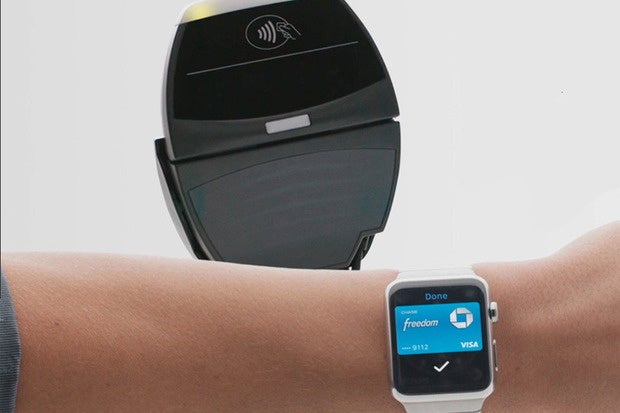5 reasons why VCs and startups need to put India under the spotlight, Visa say mobile money will follow success of contactless, Apple’s iOS 9 uncovered, MENA’s App Economy and more…
Each week the MEF team curates mobile stories from around the world. Essential news you may have missed, the latest market insight & data nuggets, the Global Mobile News Round-up offers an instant international mobile content and commerce snapshot.
Global News Stories
 5 reasons why VCs and startups need to put India under the spotlight
5 reasons why VCs and startups need to put India under the spotlight
E27
India is one of the most vibrant startup ecosystems in the world. And it’s the most complex, too. Opportunities are boundless as the country has the second largest mobile market — at around 900 million — in the world, of which smartphones account for 200 million. The time is ripe for investors, who now have all the right elements to invest their money in India. They have already started pouring billions of dollars into the country and the investment is going up further. This renewed sense of optimism is also encouraging more employees to plunge into entrepreneurship — and talented Indians are not afraid of failure any more.
Experts believe that India is not too far away from toppling the Silicon Valleys of the world to become the prime startup destination. This is evident from the recent spurt in volumes in VC deals and M&A activities. Besides, the sizes of funding deals have also gone up.
 Visa Europe believes ‘mobile money’ will follow success of contactless cards
Visa Europe believes ‘mobile money’ will follow success of contactless cards
International Business Times
The UK is fast becoming a “cash-last” society as big players in the digital payments space such as Visa predict transactions on phones and tablets will proliferate, following on from the mass uptake of contactless cards.
Visa Europe surveyed over 12,000 consumers and said it expects mobile payments to grow threefold over the next five years, with the weekly spend to hit over £1.2bn ($1.85bn, €1.6bn) by 2020. A fabled paradigm shift to mobile transactions has been touted for some years. Visa has premised an exponential leap in payments using mobile devices on the massive acceptance of contactless cards.
Everything we know about Apple’s next big iPhone update, iOS 9
Business Insider
Next week, Apple will tell us about its next big update for the iPhone and iPad.
Every year at its Worldwide Developer Conference, the company reveals all of the new features its planning to bring to iOS in the fall.
Although Apple hasn’t confirmed anything just yet, 9to5Mac’s Mark Gurman has spoken to several people familiar with the company’s plans for iOS 9. Here are the biggest additions we’re expecting to see based on his reports.
 There’s still plenty of money in dumb phones
There’s still plenty of money in dumb phones
Quartz
Microsoft released a new phone under the Nokia brand this week. It has no 3G or LTE, no Wi-Fi, no touchscreen, no apps, no Facebook, and the only accessory listed on its product page is an extra battery. It costs $20 before tax and will, in all likelihood, be a massive success.
Who would want to buy a basic phone with no internet in 2015, a time when the every big tech company on the planet is talking up its effortsto bring the next billion online via mobile? Lots of people, it turns out. Some 590 million this year, to be precise.
 The NSA wants to keep its massive spying program going a little longer
The NSA wants to keep its massive spying program going a little longer
VentureBeat
Looks like the National Security Agency isn’t ready to wrap up its controversial telephone spying program just yet.
The National Journal reports the Obama administration plans to request temporary authorization from a secret federal court to resume the NSA’s bulk telephone data collection. On Tuesday, the Obama administration signed the USA Freedom Act, officially ending the NSA’s dragnet spying program, which allowed the agency to collect and analyze vast amounts of information about Americans’ call records.
Here’s the catch: the administration isn’t banned from ending the collection for six months.
 More Bosses Expected To Track Their Staff Through Wearables In The Next 5 Years
More Bosses Expected To Track Their Staff Through Wearables In The Next 5 Years
Forbes
Last year insurance company USAA banned its employees from wearing Google Glass to work. The problem wasn’t the geeky look they gave their staff, but the potential privacy risk they posed on other colleagues and customers. USAA’s management was concerned that Glass wearers might surreptitiously record video or audio of the people around them while at work.
Ironically, employers are expected to take the opposite stance on wearables as we head towards 2020.
More companies like USAA are expected to embrace wearable devices with open arms in the coming years, precisely because of their ability to monitor the workers wearing them, and to track them more clearly as data points whose actions can be predicted and incentivized.
 Key Insights into the MENA’s App Economy
Key Insights into the MENA’s App Economy
Arabnet
52% of mobiles users in the MENA download +5 apps per month, according to a recent survey by ArabNet and On Device Research, a mobile-based global provider of research. For scale, the survey found that only 2% of users never download apps.
The survey targeted users in Saudi Arabia, Lebanon, Egypt, Jordan, and the UAE. It outlined emerging app trends related to app downloads, based on app popularity, quality, and availability. It also analyzed issues of trust linked to mobile payments and spending on apps.
 How wearables will shape the future of mobile payments
How wearables will shape the future of mobile payments
CIO
Last week, at the Wearable World Congress in San Francisco, executives from Capital One, MasterCard and PayPal participated in an animated discussion about the future of mobile payments and explained why wearable technology is an important part of their companies’ game plans.
Speaking from a shadowy stage in the city’s Palace of Fine Arts Theatre, just spitting distance from the Golden Gate Bridge and the Pacific Ocean, Stephane Wyper, MasterCard’s vice president of startup engagement and acceleration, said MasterCard is focused on leveraging the latest and greatest gadgets, including wearables, to create loyal customers.
“As we look at the future, consumers are clearly interacting with a whole host of new devices that extend beyond plastic or the devices in their pocket,” Wyper said. The question for MasterCard is, “How do we enable all of those connected devices to be payment devices?”
 Smartphones will be used by 70% of the world population by 2020, says Ericsson
Smartphones will be used by 70% of the world population by 2020, says Ericsson
Mobile Time
In 2020, 70% of world population will use smartphones and 90% of them will be covered by networks of mobile broadband data, reveals the new edition of Ericsson Mobility Report. In addition, 26 billion devices will be connected, showing the growth of the Internet of Things called (IoT).
The number of smartphones in use, in turn, should more than double by 2020, reaching 6.1 billion – it’s currently 2.6 billion. Most of the growth will come from developing countries in the Asia-Pacific region, Africa and the Middle East.
“Of the five countries that will acquire smartphones signatures, only India should achieve 620 million. They will acquire an entire Latin America by 2020,” explains André Gualda, specialist Ericsson ConsumerLab in Latin America. “I still have growing Middle East and Africa. In all, 80% of new connections in the world of smartphones will be those regions.”
Read More… (Portuguese)
 67 Per Cent of UK Newspapers’ Readers from Mobile
67 Per Cent of UK Newspapers’ Readers from Mobile
Mobile Marketing Magazine
67.2 per cent of the monthly audience for UK newspapers – some 31.3m people – consume articles on a mobile device, far outstripping the monthly desktop audience of 17.5m.
That’s according to the latest National Readership Survey figures, covering the period April 2014-March 2015, which name The Independent and Mirror as the biggest winners on mobile.
69.2 per cent of Independent readers (10.8m) access the publication via mobile, and 56.1 per cent (8.8m) are mobile-only users. For the Mirror, those same figures stand at 68 per cent (15.6m) and 53 per cent (12.2m) respectively.
 6.1B Smartphone Users Globally By 2020, Overtaking Basic Fixed Phone Subscriptions
6.1B Smartphone Users Globally By 2020, Overtaking Basic Fixed Phone Subscriptions
TechCrunch
Today there are 2.6 billion smartphone subscriptions globally, and while growth has been levelling off in developed markets like the U.S. and Europe, it’s not stalling altogether by a long shot. By 2020, globally there will be 6.1 smartphone users led by huge growth in less mature markets. And with 6.1 billion smartphones in circulation, we will see a tipping point of sorts: smartphones will finally overtake the number of active fixed line subscriptions worldwide in 2020.
The numbers come from the latest annual Mobility Report from Ericsson, which is being published today. Using data gathered from around 100 carriers globally, Ericsson uses this to paint a picture of what is going on right now, as well as what to expect in the future, covering not just how many people are using mobile networks but also how they are using mobile.
Global News Round-up – These articles are not written by MEF and do not represent any views of individuals, members or the organisation.





